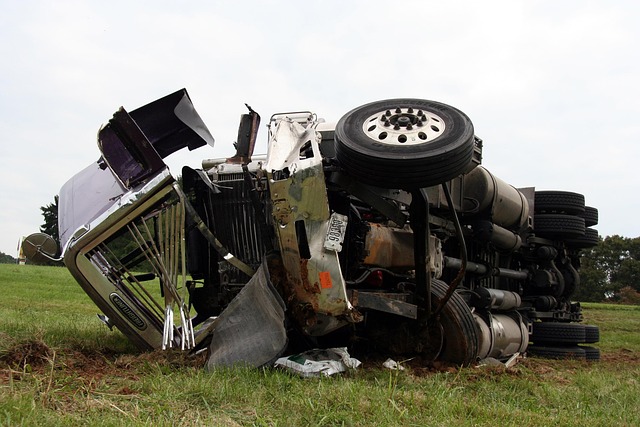Looking to register your car in California? This comprehensive guide breaks down the process, ensuring a smooth experience. We’ll walk you through understanding eligibility requirements for car registration in California, gathering essential documents for DMV VIN verification, preparing your vehicle for inspection, completing the registration process step-by-step, and obtaining your license plate and vehicle registration documents. Follow these steps to navigate the process effortlessly.
- Understand Eligibility Requirements for Car Registration in California
- Gather Necessary Documents for DMV VIN Verification
- Prepare Your Vehicle for Inspection and Registration
- Complete the DMV Registration Process Step-by-Step
- Obtain License Plate and Vehicle Registration Documents
Understand Eligibility Requirements for Car Registration in California

Before registering your car in California, it’s crucial to understand the eligibility requirements. To start, your vehicle must be legally imported and meet all emissions standards set by the California Air Resources Board (CARB). Additionally, the vehicle’s year, make, and model must align with the state’s safety standards. One critical step is ensuring a successful DMV VIN verification process, which involves checking the vehicle identification number (VIN) against state records to confirm its history and ensure it hasn’t been reported stolen.
A mobile vin verifier or app can assist in this process by providing a convenient way to conduct a VIN inspection. This digital tool allows you to input your VIN and gain instant access to detailed information about your car’s past, including ownership history, accident reports, and maintenance records. By utilizing these resources, you’ll be better prepared to navigate the registration process smoothly and efficiently at your nearest California DMV office.
Gather Necessary Documents for DMV VIN Verification

Before heading to the DMV for VIN (Vehicle Identification Number) verification, ensure you gather all the essential documents. This process is crucial for registering your car in California and includes several key elements. You’ll need your vehicle’s registration certificate from its previous state of residence, a valid driver’s license or identification card, proof of insurance, and the title to the vehicle. Additionally, you must present a completed DMV Form REG-157, which is specifically designed for VIN verification.
For convenience, many residents opt for a mobile VIN inspection service, allowing them to verify their vehicle’s information remotely. This alternative method eliminates the need to visit a DMV office and can often be done from the comfort of your home or workplace. Make sure the service provider you choose is reputable and offers accurate, official VIN inspections to ensure a smooth registration process.
Prepare Your Vehicle for Inspection and Registration

Before you can register your car in California, ensure it’s ready for the state’s rigorous inspection process. The Department of Motor Vehicles (DMV) requires a thorough check to verify that your vehicle meets safety and emissions standards. One crucial step is to obtain a Vehicle Identification Number (VIN) verification report. This involves using a reliable mobile VIN verifier to access detailed vehicle history information, including any previous accidents or significant repairs. With this data, you can address any issues before the inspection, ensuring a smoother registration process.
During preparation, consider scheduling a mobile VIN inspection to have an expert assess your car remotely. This service provides a convenient way to ensure your vehicle is in compliance with California’s regulations. By taking care of these preliminary steps, including VIN verification, you’ll be well on your way to successfully registering your car with the DMV.
Complete the DMV Registration Process Step-by-Step

Follow these straightforward steps to complete your DMV registration process efficiently. Begin by gathering all necessary documents, including your vehicle’s registration certificate from the previous owner, proof of insurance, and a valid driver’s license. Next, visit the California DMV website to initiate the online registration process or prepare for an in-person visit to a local DMV office.
If you opt for a mobile vin verifier, you can perform a quick and convenient vin inspection to verify your vehicle’s history before registering. Once all documents are ready, submit them along with the required fees. For online registration, this typically involves filling out forms and uploading digital copies of your documents. If visiting the DMV, follow their instructions to complete the process, which may include a short wait for processing. Ensure you understand any additional requirements or restrictions related to your vehicle type or age.
Obtain License Plate and Vehicle Registration Documents

After confirming your vehicle’s ownership, it’s time to gather essential documents and register your car with the California Department of Motor Vehicles (DMV). The first step in this process involves obtaining your license plate and vehicle registration. Start by scheduling a DMV appointment or using their online services to request a Vehicle Identification Number (VIN) verification. This step is crucial as it ensures that your vehicle’s details match the information on record, enhancing security and preventing fraud.
During the VIN inspection, you’ll need to provide proof of identity, insurance, and ownership. A mobile vin verifier can also be used for this purpose, offering a convenient and quick alternative to visiting a DMV field office. Once your vehicle passes the verification, you’ll receive your license plate, registration documents, and official confirmation that your car is now registered with the California DMV.
Registering a car in California involves understanding eligibility requirements, gathering essential documents for DMV VIN verification, preparing your vehicle for inspection, completing the registration process step-by-step, and obtaining necessary license plate and registration documents. By adhering to these straightforward steps and ensuring proper documentation, you can navigate the process efficiently and hit the roads legally.
